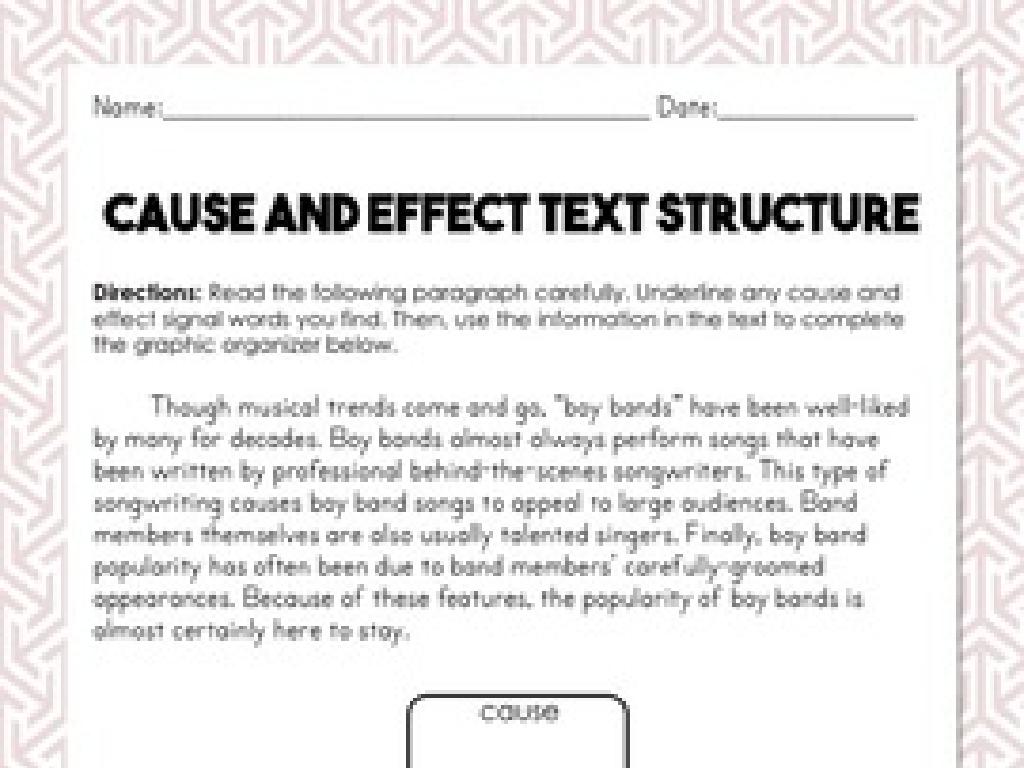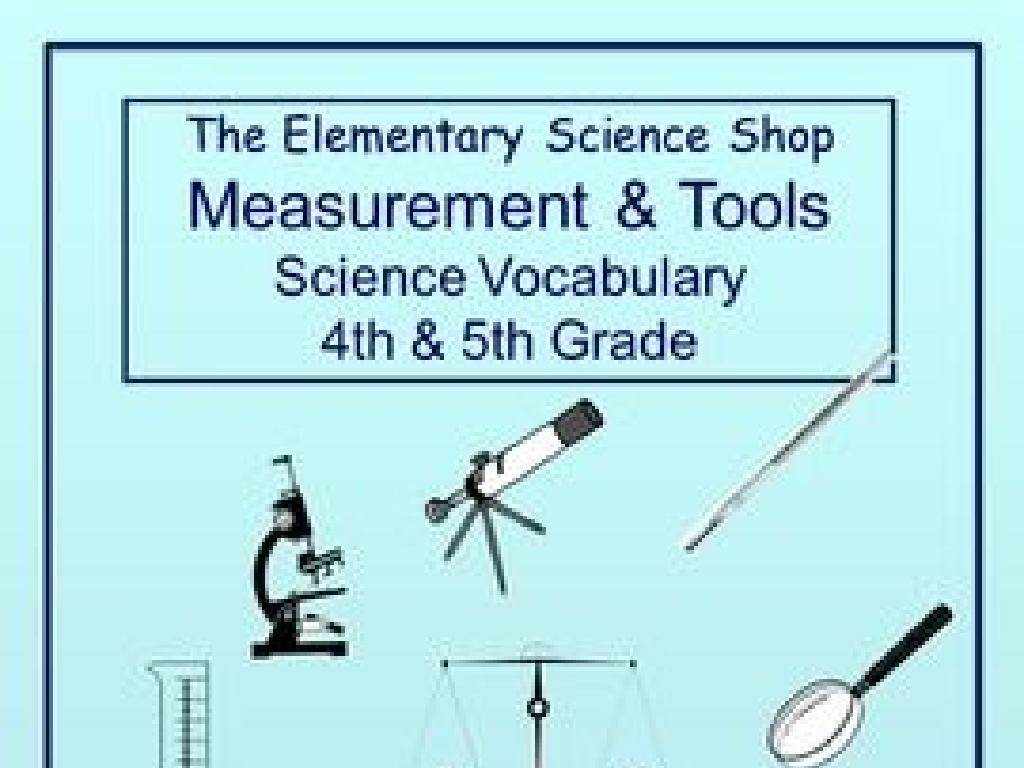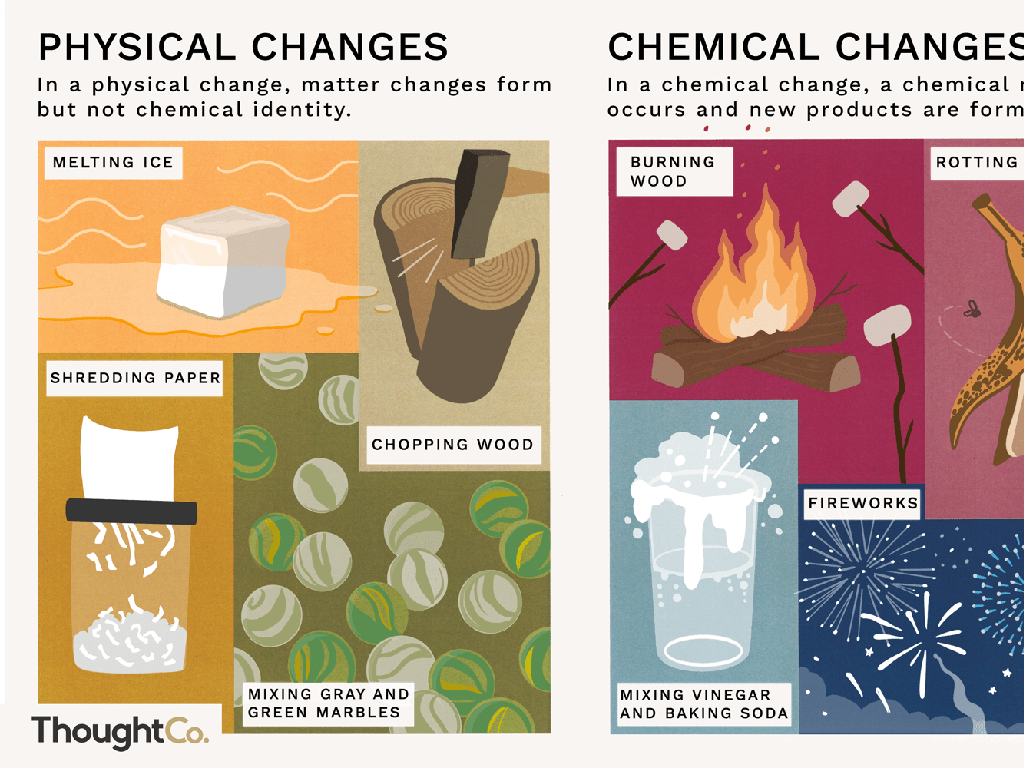Compare Magnitudes Of Magnetic Forces
Subject: Science
Grade: Seventh grade
Topic: Velocity, Acceleration, And Forces
Please LOG IN to download the presentation. Access is available to registered users only.
View More Content
Welcome to Magnetic Forces
– Invisible forces: Magnetism
– Magnetism is a force that acts at a distance, even without direct contact.
– Magnets’ interaction
– Magnets can attract or repel each other depending on their poles.
– Magnetism as a force
– Like gravity, magnetism is an invisible force that can push or pull objects.
– Comparing magnetic strengths
|
This slide introduces students to the concept of magnetic forces, an invisible yet powerful aspect of physics. Begin by explaining that magnetism is a force that can act over distances without direct contact, much like gravity. Discuss how magnets have two poles, north and south, and how opposite poles attract while like poles repel each other. Emphasize that magnetism is a type of force that can cause objects to move without touching them. Finally, encourage students to think about how different magnets can have different strengths, and how we might compare these forces. Use examples like fridge magnets versus industrial lifting magnets to illustrate varying magnitudes of magnetic force.
Exploring Magnetic Forces
– Define magnetic force
– It’s the attraction or repulsion between magnetic objects.
– Understand the magnetic field
– The space around a magnet where magnetic forces can be felt.
– Everyday examples of magnetism
– Fridge magnets holding notes, compass needle pointing north.
– Investigating magnetic interactions
|
Begin with a definition of magnetic force, emphasizing its role as a non-contact force that can either attract or repel objects with magnetic properties. Explain the concept of a magnetic field as the area around a magnet where its force is effective, using diagrams to illustrate field lines. Provide relatable examples such as fridge magnets and compasses to help students connect the concept to real-world applications. Discuss how different materials respond to magnetic forces and how the strength of the force can vary with distance. Encourage students to think of additional examples and to consider how magnetic forces are used in technology.
Magnetic Poles and Forces
– Every magnet has North and South poles
– Like poles repel, unlike poles attract
– Similar poles push away, opposite poles pull together
– Visualizing pole interactions
– Use iron filings to see magnetic field lines
– Exploring magnetic force magnitude
– The force’s strength changes with distance and pole size
|
This slide introduces students to the fundamental concepts of magnetism, focusing on magnetic poles and their interactions. Begin by explaining that every magnet, no matter its shape or size, has two poles: North and South. Emphasize that like poles repel each other while unlike poles attract, which is a key principle in understanding magnetic forces. Demonstrate this concept visually, perhaps with bar magnets and iron filings to show the magnetic field lines, which will help students visualize how the poles interact with each other. Discuss how the magnitude of the magnetic force can vary depending on the distance between the magnets and the size of the poles involved. This will set the stage for further exploration of magnetic forces and their applications in the real world.
Comparing Magnitudes of Magnetic Forces
– Understanding ‘magnitude’ of force
– ‘Magnitude’ refers to the size or strength of a force.
– Factors influencing magnetic strength
– Material type, temperature, and magnet size affect strength.
– Distance and force relationship
– As distance increases, magnetic force decreases.
– Exploring the inverse-square law
– Force diminishes as the square of the distance increases.
|
This slide introduces the concept of ‘magnitude’ as it relates to the strength of magnetic forces, which is a key concept in understanding how magnetic interactions work. Discuss the various factors that can affect the strength of a magnetic force, such as the type of materials involved, the temperature, and the size of the magnets. Highlight the inverse relationship between distance and force, explaining the inverse-square law, which states that the strength of the magnetic force decreases proportionally to the square of the distance from the source. Use examples like the force between two magnets to illustrate this law. Encourage students to think of real-life scenarios where this knowledge is applicable, such as in the use of fridge magnets or magnetic levitation trains.
Comparing Magnitudes of Magnetic Forces
– Methods to compare magnetic forces
– Experiment: Testing magnet strength
– We’ll use two magnets to see which one can pick up more paper clips.
– Using iron filings to observe force
– Sprinkle iron filings around different magnets to visualize the magnetic field strength.
– Understanding force magnitude
– Force magnitude tells us how strong a magnet is by how much it affects objects.
|
This slide introduces students to the concept of comparing the strength of magnetic forces. Start by discussing the methods used to compare magnetic forces, such as using objects like paper clips to test how many each magnet can pick up. Set up an experiment where students can test different magnets to determine which is stronger. Use iron filings to provide a visual representation of magnetic fields, allowing students to observe the differences in force magnitude. Explain that the magnitude of force is an indicator of how powerful a magnet is, and can be seen by how much it influences other magnetic objects. Encourage students to hypothesize which magnet will be stronger and why, before conducting the experiment.
Measuring Magnetic Forces
– Tools for measuring force
– Examples: spring scale, force meter
– Mass and distance impact
– Greater mass and closer distance increase force
– Using a spring scale
– Attach magnet to scale, measure force as it pulls
– Calculating magnetic force
– Apply F = kx, where k is spring constant, x is extension
|
This slide introduces students to the concept of measuring magnetic forces. Begin by discussing the tools used, such as spring scales and force meters, and explain how they work. Emphasize the importance of mass and distance in the strength of magnetic forces; larger masses and shorter distances result in stronger forces. Demonstrate how to use a spring scale to measure the force exerted by a magnet by attaching the magnet to the scale and observing the measurement. Teach students the formula F = kx to calculate force, where k is the spring constant and x is the extension of the spring. Provide examples and possibly a live demonstration to solidify understanding.
Real-World Applications of Magnetic Forces
– Maglev trains technology
– Maglev trains float on magnets, reducing friction and increasing speed.
– MRI machines in medicine
– MRI uses powerful magnets to create detailed images of the body.
– Recycling using magnets
– Magnets separate metals from other materials, aiding in recycling processes.
– Understanding environmental impact
– Assessing how magnetic technology affects our environment.
|
This slide aims to illustrate the practical applications of magnetic forces in various fields. Students will learn how magnetic levitation (Maglev) trains operate without touching the ground, which allows for less wear and higher speeds. In medicine, they’ll discover how Magnetic Resonance Imaging (MRI) machines use magnets to safely visualize internal structures of the body. The recycling industry’s use of magnets to sort and separate metals from waste will be discussed, highlighting the importance of magnets in environmental conservation. Finally, encourage students to think critically about the broader implications of magnetic technologies on the environment. This discussion can lead to a deeper understanding of the role of physics in everyday life and the importance of sustainable practices.
Class Activity: Exploring Magnetic Forces
– Group activity with various magnets
– Record force, distance, and size observations
– Note how the force changes with distance and magnet size
– Determine strongest and weakest magnet
– Use a scale to measure force; compare small vs. large magnets
– Share findings with the class
|
In this hands-on group activity, students will explore the relationship between magnetic force, distance, and magnet size. Provide a variety of magnets for each group. Students should use tools like spring scales to measure the force exerted by each magnet and rulers to measure the distance at which the magnet still has an effect. They should record their observations, noting how the force changes with distance and the size of the magnet. Each group will identify their strongest and weakest magnet based on their measurements and present their findings to the class. Possible activities include measuring how much weight a magnet can hold before releasing, how far away a paperclip is attracted to the magnet, and comparing the strength of different shapes and sizes of magnets.
Wrapping Up: Magnetic Forces
– Recap of magnetic force concepts
– We explored how magnets attract or repel and factors affecting strength.
– Open floor for magnetism questions
– Think about what you’ve learned and ask anything you’re curious about.
– Homework: Magnetic forces in tech
– Write a paragraph on how magnetic forces are used in everyday technology.
|
As we conclude today’s lesson, we’ll revisit the key points about magnetic forces, such as the laws of attraction and repulsion and how distance and material affect a magnet’s strength. Encourage students to ask questions to clarify their understanding. For homework, students will reflect on the lesson and write about the role of magnetic forces in technology, which will help them connect scientific concepts to real-world applications. This exercise will also enhance their ability to communicate scientific ideas in writing. Be prepared to provide examples of technology that use magnetic forces, such as MRI machines, maglev trains, and speakers, to help students brainstorm.





